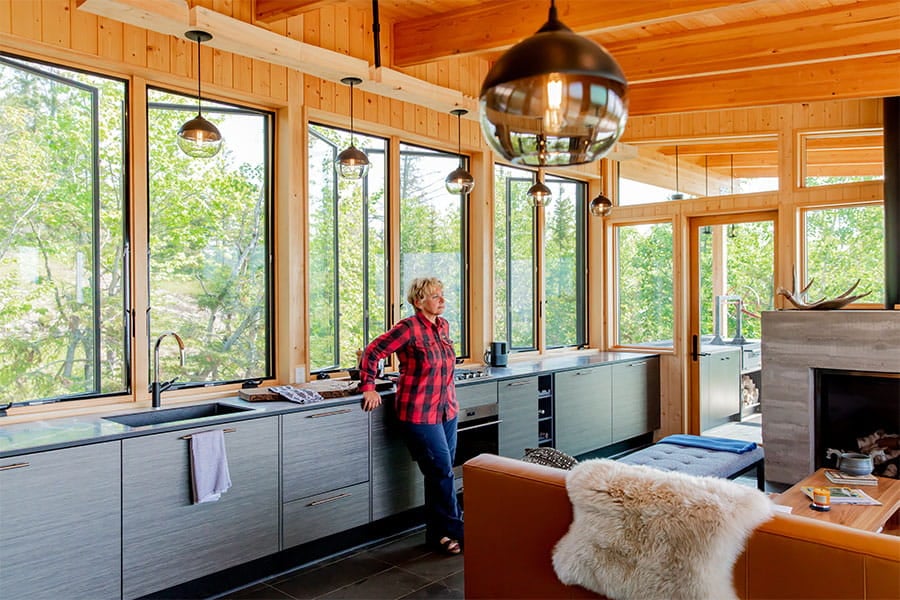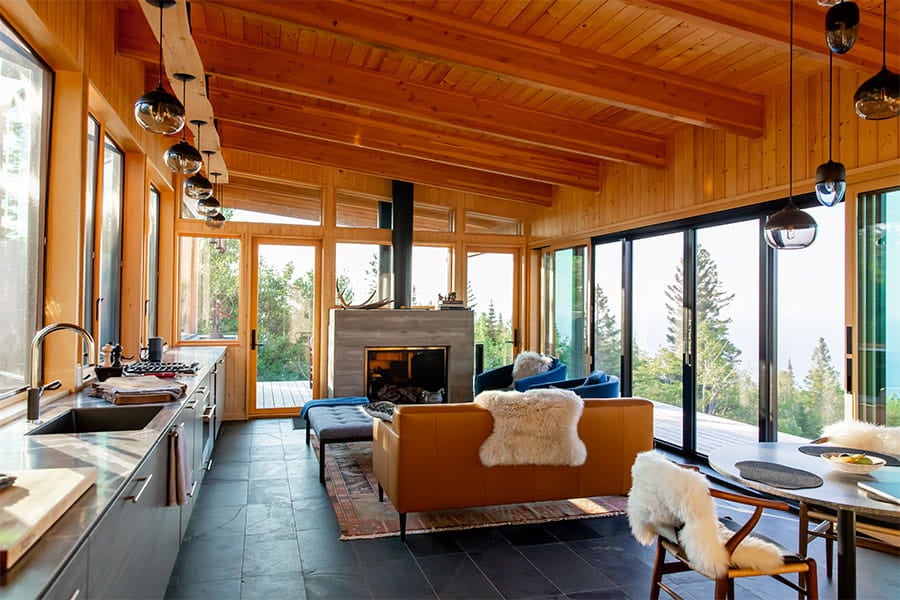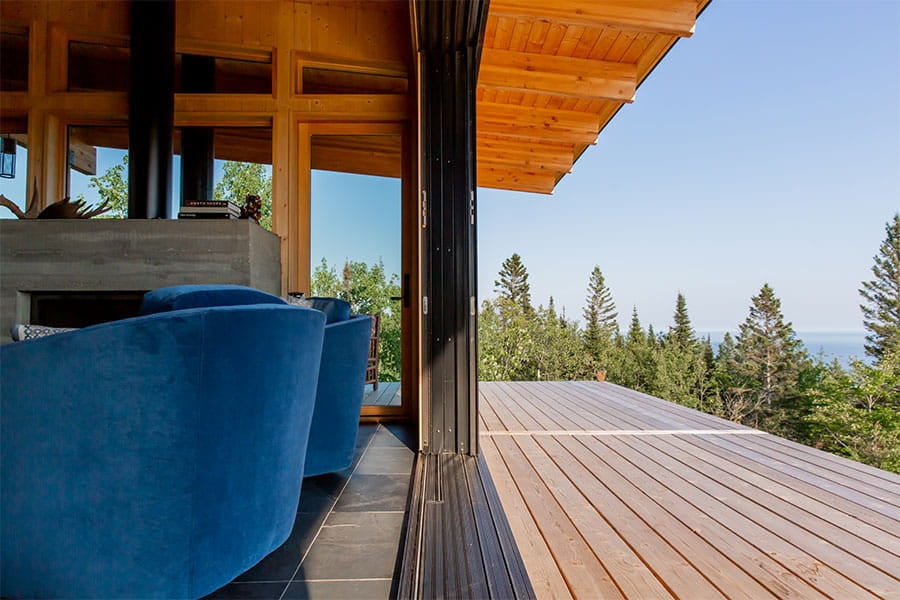Projects
A cabin that’s built better, not bigger

A beautiful design
Working with an architect was important because of the site’s beauty. Mason wanted a cabin that would make the most of the view, fit in with the majesty of its surroundings, and last. The final point was particularly important because she considers herself the caretaker of the property that will one day belong to her children. To make such a home a reality, Mason knew she needed the skills of a top-notch architect.
“I’m not a person who’s afraid to call people and ask questions,” she said. So, she dialed up an architect she’d long admired, Tom Kundig of the lauded Seattle firm Olson Kundig. To her surprise, he picked up the phone, and by the end of their conversation he’d agreed to design her home.
The plan that resulted is small — only about 1,500 square feet split evenly between indoors and outdoors with a large wrap-around deck that includes an outdoor kitchen. It has a simple layout with only a single bedroom and bathroom carved out of what is otherwise an open concept eating-dining-living space surrounded by three walls of glass. In short, it’s perfect for Mason. Its biophilic design connects her strongly with the landscape that drew her to the place, and the expansive deck and living area make it ideal for hosting and entertaining family and friends.

The open concept space is the “heartbeat of the home” as Mason put it. High ceilings and three walls of glass make the modest square footage feel much larger than it is.
Selecting the right materials
Every step of Mason’s building journey is characterized by strong intentionality, and that was certainly true when it came to selecting building materials. Mason prioritized sustainable and “culturally relevant” materials. Locally-sourced pine lines the interior walls while the siding is formed from salvaged pine siding treated with pine tar and linseed oil — a traditional Swedish approach that nods to Minnesota’s strong Scandinavian heritage. And for windows and doors, Mason chose a local manufacturer in Andersen.
Glass lines three full walls of the home, letting in lots of natural light while also allowing for passive heating and cooling. The south wall faces the lake. It lets in beautiful direct light while the overhang of the shed roof shields it from too much solar heat gain when the sun is high in the summer. In the winter, when the angle of the sun is lower, the sun’s rays help warm the interior. Instead of windows, Mason chose a six-panel MultiGlide™ Door, which completely opens up the wall, allowing in cooling breezes in the summer and working in conjunction with the casement windows on the north wall for effective cross ventilation.

“You can tell from where you're standing and the vistas that you look out upon that somebody with some training and some intention crafted this space,” Mason said. One of the most striking vistas is from the south side of the home where a six-panel MultiGlide Door opens up the wall welcoming in lake breezes and uniting the indoor and outdoor spaces into one expansive living area.
Building an efficient home
Although the home is full of glass, it is also energy efficient. The home is well insulated due to the structurally insulated panels (SIP) used in the walls, floor, foundation, and roof. And the windows and doors are well suited to the climate too.
Mason chose 400 Series Casement Windows, which are wood with a vinyl exterior. The wood offers good thermal performance while the vinyl cladding offers durable protection that can stand up to the weather.
The six-panel MultiGlide Door and the two single-panel E-Series Hinged Patio Doors are similarly constructed to the windows with wood interiors and protective exterior coatings — though these doors are clad in aluminum, instead of vinyl.
All the windows and doors feature dual-pane glass, which is insulating, and a low-emissivity (Low-E) coating that helps reflect the sun’s heat away in summer while allowing it in during the winter.
At the home’s front is a bright red Pivot Door constructed of wood with a thick aluminum exterior coating that helps to seal out the high wind and cold weather blowing off Lake Superior.

The 400 Series Casement Windows in the kitchen are 5-feet-9-inches tall. With their gracious proportions and bold black color, they complement the home’s modern aesthetic. Mason chose the 400 Series contemporary frame option, which features clean, geometric lines.
Mason’s intentional approach prioritized beautiful design and high-quality materials, but more specifically, a beautiful design that fits the location and suits her lifestyle. The building materials complement that design while also providing the performance needed for a Lake Superior cabin.
The result is that “it feels like home,” Mason said. “When I’m here, I feel most myself.”
